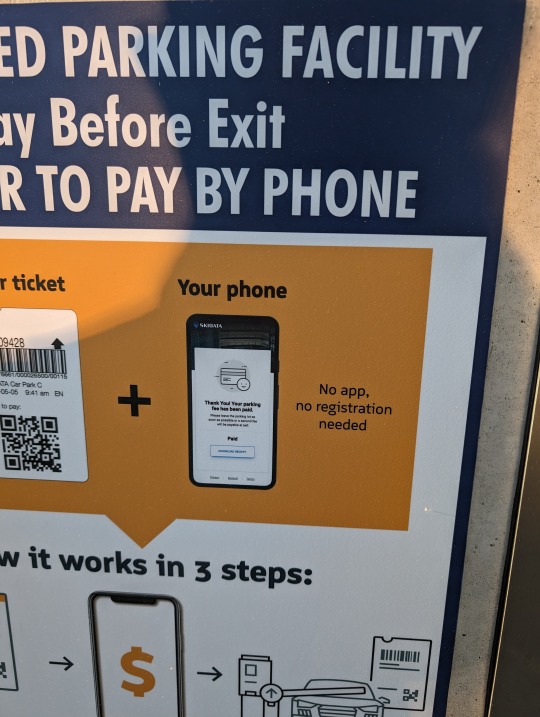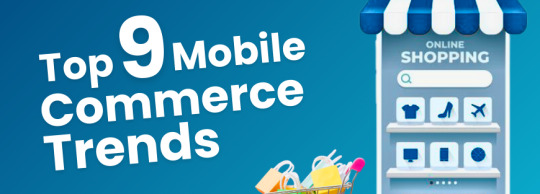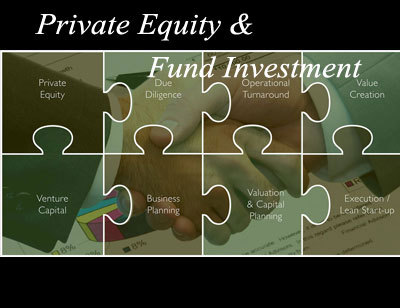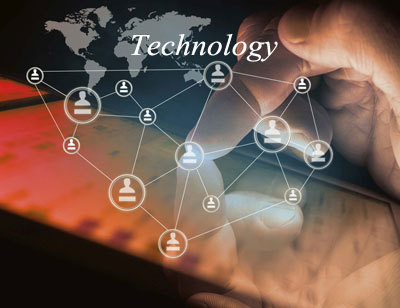#M-Commerce
Text
Give the people what they want

#avalon#catalina island#apps#app fatigue#account fatigue#surveillance#mobile#m-commerce#parking#consumer revolt#apps are crap#an app is a web page skinned with enough IP to felonize mods#privacy
273 notes
·
View notes
Photo

10 posts!
#10 posts#tumblr milestone#e-commerce development services provider in india#mobile app development#artificial intelligence#m-commerce#e-commerce developers in India#estorewhiz
1 note
·
View note
Text

M-commerce means mobile commerce which has become one of the fastest modes of ease of doing commerce across the globe. It is a subset of e-commerce, which includes transaction involvement using mobile devices, such as smartphones, tablet computers, etc.
#webbeeglobal#mobilecommerce#ecommerce#m-commerce#onlinebusiness#digitaltransformation#digitaltechnology
0 notes
Text
Mobile Commerce (M-Commerce): Key Considerations and Opportunities
Mobile Commerce (M-Commerce) has emerged as a game-changer in an era dominated by smartphones, reshaping how consumers shop and businesses operate. This blog delves into the critical considerations and opportunities in M-Commerce, offering insights for businesses looking to thrive in the mobile-driven market.
Introduction to M-Commerce
The development of e-commerce into the mobile realm is known as mobile commerce or M-commerce. Since most customers use mobile devices to access the internet, businesses have many opportunities. Meeting customers where they are—on their smartphones—is the goal of mobile commerce (M-Commerce), from feature-rich mobile apps to streamlined mobile websites.
M-Commerce Success Factors
1. Responsive Design and User Experience:
M-Commerce platform design is responsive and fluid on a range of devices.
Give the utmost importance to an intuitive and easy-to-use interface.
2. Mobile Payment Integration:
Implement secure and convenient mobile payment options.
Integrate with popular digital wallets for added user convenience.
3. Personalization and Customer Engagement:
Use data to make personalized product recommendations.
Engage users with targeted and timely push notifications to drive sales and promotions.
M-Commerce Opportunities
1. Global Reach and Accessibility
M-commerce transcends geographical boundaries, providing businesses with an opportunity for global reach. It makes 24/7 accessibility very convenient, catering to the on-the-go lifestyle of modern consumers.
2. Seamless Integration with Social Commerce:
The synergy between M-Commerce and social media platforms creates a seamless shopping experience for users. Social commerce platforms like Instagram Shopping, and Facebook Marketplace enhance product discovery and sales.
Magnigeeks as your M-commerce service provider
Magnigeeks stands out as an ideal partner for comprehensive support in the rapidly evolving e-commerce landscape. Our expertise ranges from creating mobile-friendly websites to creating feature-rich mobile apps tailored to your company's requirements. With over 6+ years in the industry, Magnigeeks ensures that your M-Commerce strategy meets industry standards and exceeds customer expectations by focusing on user experience, security, and innovative features.
Are you ready to ride the M-Commerce tidal wave with us? Magnigeeks provides unrivaled support and transformative solutions. We are the starting point for your success in the mobile-driven market. Visit https://magnigeeks.com/ to learn more about Magnigeeks' M-Commerce services and partner with us.
0 notes
Text
Top 9 Mobile Commerce Trends of 2024

Do you recall those times before smartphones? Your chunky flip phone was used primarily for making calls and receiving texts occasionally. Mobile technology has truly changed the way we live. We always have smartphones in our hands that are actually controlling our lives. Looking at the current mobile commerce trends, we can see how far we’ve come since the days of Nokia.
What is Mobile Commerce?
Mobile Commerce, or simply m-Commerce, is the process of completing any monetary transaction for any goods or service virtually from anywhere using a wireless handheld device like a cell phone or tablet. mCommerce goes beyond being a straightforward development of electronic commerce. Here are a few examples of mCommerce:
In-app purchasing
Virtual marketplace apps
Browser based purchasing
Digital wallets like Google Pay, Apple Pay, Paytm and more…
Mobile commerce has rapidly evolved in recent years, transforming how people shop and interact with businesses. It will continue to grow over the years due to the drastic changes in the purchasing behavior of consumers. According to Statista’s yearly market report, mobile commerce account for $2.2 trillion in revenue in 2023 and is speculated to reach $3.4 trillion in 2027.
How is Mcommerce Different from eCommerce?
M-Commerce vs. E-Commerce: Mobile commerce entails electronic transactions carried out on portable devices like smartphones and tablets. eCommerce, on the other hand, is a broader term and encompasses all electronic transactions carried out online.
For example, purchasing something from Amazon using a tablet or phone is mobile commerce while using your desktop to make payment for a purchase is ecommerce.
9 Mobile Commerce Trends You Need to Know About in 2024
As we are almost reaching the end of 2023, several key mobile commerce trends are shaping the landscape of mobile commerce, influencing consumer behavior and business strategies. So, let us check out the top 9 mobile commerce trends that are going to rule in 2024.
1. Mobile Wallets are Becoming Go-to Payment Method
Mobile payments have become an essential component of mobile commerce. Mobile wallets like Apple Pay, Paytm, Google Pay have gained popularity because using them mobile users can easily make purchases without manually entering their payment information.
Users can securely store their payment information in their mobile devices instead of carrying physical wallets or entering credit card details for every purchase. With mobile wallets, you can make quick and contactless payments by simply tapping your phone from anywhere. This eliminates the need for cards, which makes transactions faster, safer and more secure.
2. One Click Ordering
One of the biggest reasons people abandon their online shopping carts is the checkout process being too complicated. One-click ordering is an innovation that streamlines the checkout process, allowing customers to make purchases with just one click.
This feature is increasingly popular on mobile devices because it offers convenience for shoppers on the go. Retailers are even putting much effort into mobile app development to create a seamless and convenient mobile shopping experience. These apps make it much easier to complete the checkout process.
3. Increased Use of Voice Search for Shopping
With the advancements in natural language processing and AI technology, voice search for ecommerce site technology is becoming increasingly popular. Businesses are starting to take notice because it offers a convenient way to shop. By using virtual assistants like Alexa, Siri and Google Assistant, people can now purchase using just their voice.
For example, imagine you are cooking in the kitchen and realize you need to order some groceries. Instead of stopping what you’re doing and typing on your phone, you can simply ask your virtual assistant to add items to your shopping cart or place an order for you.
By 2024, it is predicted that half of all online searches will be voice searches. Therefore, companies must optimize their mobile commerce platforms for voice search to remain competitive. They can integrate voice search into shopping apps and websites. By enabling consumers to find products and make purchases using voice commands, businesses can offer a more immersive and natural shopping experience.
4. AR/VR
Augmented reality (AR) and Virtual Reality (VR) technologies are already transforming how we shop on mobile devices. They are being used to provide a more captivating and interactive shopping experience. For example, some fashion brands have AR fitting rooms that allow you to virtually try on clothes and see how they look on your body. Others help you see how furniture will look in your space, or even allow consumers to test makeup products without physically using them.
By 2024, these technologies will become even more advanced. Businesses will leverage AR/VR technology to allow customers to visualize products in real-world environments, increasing their confidence in purchasing. It will provide consumers with a highly immersive shopping experience by overlaying virtual elements onto the real world through your mobile device camera.
5. Social Commerce is Booming
Social commerce has experienced a tremendous growth in 2023 and social channels have become an increasingly important part of mobile commerce in recent years. It’s all about using social media platforms like Instagram and Facebook to sell their products directly to consumers. You can discover products and make purchases without leaving your favorite social apps.
It is like having a virtual mall right at your fingertips. With social commerce, brands can:
Showcase their products with shoppable posts and stories.
Collaborate with social media influencers to promote their products.
Show real-time reviews and feedback from other users.
Make shopping for their audience more convenient and interactive.
6. Progressive Web Apps (PWAs)
Progressive web apps (PWAs) are becoming increasingly popular because they offer a seamless user experience that rivals native apps. PWAs are web-based apps designed to function like native apps, offering the same functionality and performance.
PWAs will soon become an even more essential component of mobile commerce, offering businesses a cost-effective way to provide a mobile app experience to their customers. So, make sure you invest in progressive web apps in the coming year.
7. Personalization is the Key
With the development in AI and machine learning, retailers are able to gather and analyze vast amounts of customer data. This allows them to create highly personalized shopping experiences that help in meeting the needs and preferences of the people. For example, when you visit an online store, you may notice that the homepage showcases products that are relevant to your interests or previous purchases. This is because the retailer has analyzed your browsing and purchasing history to curate a personalized selection for you.
Personalization goes beyond just product recommendations. Retailers also use personalization to offer customized promotions and discounts to their customers. You may receive exclusive offers or coupons made just for you based on your shopping patterns and preferences. Personalization has even led to a boom in ecommerce trend sales. So, it can be safe to say that going forward, personalization will be crucial in any business’ success.
8. Mobile Chatbots
Chatbots are becoming increasingly common in customer service, especially on mobile devices. Chatbots are AI-powered tools that automate customer interactions, providing customers with quick and efficient assistance. In the coming years, chatbots will become even more sophisticated, providing businesses with an efficient means to answer customer queries.
If you want to offer customer service to your clients 24*7, 365 days a year then you will need to integrate AI-powered chatbots with your site. They will save your time and free resources that you could use somewhere else.
9. Sustainability is a Growing Concern
As people become more aware of the environmental impact of their actions, including their shopping habits, sustainability has become a significant consideration in mobile commerce. Consumers are constantly seeking out eco-friendly and sustainable options when making purchases through mobile devices.
Businesses have understood this shift in consumer behavior and are responding by offering sustainable products and implementing environmentally friendly practices. For example, many mobile commerce platforms now feature dedicated sections for sustainable and ethically sourced products. Additionally, mobile commerce apps include features that allow users to identify and evaluate the sustainability credentials pf products easily.
Conclusion
Mobile shopping will only grow stronger as time passes. It means that mobile commerce will be crucial for businesses of all sizes. The mcommerce trends we discussed are not likely to die out anytime soon. Therefore, by keeping up with the latest trends, companies can offer their customers a seamless and convenient shopping experience, remain competitive, and leverage the full potential of the mobile commerce revolution.
Original Source: https://knotsync.com/mobile-commerce-trends/
0 notes
Text
Gadget mi
vt.tiktok.com/ZSLKQLNKX/
View On WordPress
0 notes
Text
Le M-commerce pour Mobile Commerce : Facilitez Vos Achats sur Smartphones et Tablettes en 2023
Le M-commerce, ou Mobile Commerce, est un domaine en pleine expansion qui révolutionne la façon dont nous faisons des achats en ligne. Dans cet article, nous allons explorer en profondeur ce qu’est le M-commerce, son impact sur l’e-commerce, et comment vous pouvez en tirer parti pour faciliter vos achats sur smartphones et tablettes. Que vous soyez un consommateur curieux ou un commerçant…

View On WordPress
0 notes
Text
The Future of E-commerce: What You Need to Know About the Latest Trends and Technologies
Greetings, fellow shoppers! As the world becomes increasingly digital, it's no surprise that e-commerce is booming. In fact, according to Statista, the global e-commerce market is expected to reach $6.54 trillion by 2023. That's a staggering amount, and it's clear that the future of e-commerce is bright. But what are the latest trends and technologies that are driving this growth? And what do you need to know in order to stay ahead of the game?
Mobile Commerce (M-Commerce)
One of the biggest trends in e-commerce right now is mobile commerce, or M-commerce for short. As smartphones become more advanced and ubiquitous, it's no surprise that people are increasingly using them to make purchases. In fact, a recent report by eMarketer predicts that by 2021, mobile commerce will account for 72.9% of all e-commerce sales. That's a huge market, and it's one that you can't afford to ignore.
Artificial Intelligence (AI)
Another technology that's transforming e-commerce is artificial intelligence. AI is being used in a variety of ways, from chatbots that can answer customer questions to personalized product recommendations based on a customer's browsing and purchase history. With AI, e-commerce companies can provide a more personalized and efficient shopping experience, which can lead to higher sales and customer satisfaction.
Augmented Reality (AR)
Augmented reality is another technology that's starting to make waves in e-commerce. With AR, customers can see what a product will look like in their own environment before they buy it. For example, IKEA's AR app allows customers to place virtual furniture in their own homes to see how it will look before they make a purchase. This technology has the potential to revolutionize the way we shop online, and it's one to watch in the coming years.
Voice Commerce
Finally, voice commerce is another trend that's on the rise. With smart speakers like Amazon's Echo and Google Home becoming more common in households, voice commerce is becoming an increasingly important channel for e-commerce companies. In fact, a recent study by OC&C Strategy Consultants predicts that by 2022, voice commerce will be a $40 billion industry in the US alone.
So, what does all this mean for you? If you're an e-commerce business owner or manager, it's important to stay on top of these trends and technologies. Mobile commerce, artificial intelligence, augmented reality, and voice commerce are all areas where you can differentiate yourself from the competition and provide a better shopping experience for your customers.
Of course, there are many other trends and technologies that are shaping the future of e-commerce, but these are some of the most important ones to keep an eye on. Whether you're a shopper or a business owner, the future of e-commerce is exciting and full of possibilities.
Thank you for reading, and happy shopping!
#e-commerce#M-commerce#artificial intelligence#AI#augmented reality#AR#voice commerce#shopping#online shopping#retail#future trends#technology#digital#smartphones#customer experience#customer satisfaction#personalization#chatbots#virtual reality#VR#smart speakers#Amazon Echo#Google Home#market trends#shopping habits
0 notes
Text
A Complete Guide to Mobile Commerce in 2023
Mobile commerce, or m-commerce, refers to the use of wireless handheld devices like mobile phones and tablets to carry out business activities online, such as the buying and selling of goods, conducting financial transactions, and paying bills.

For owners of Internet businesses, understanding the realm of mobile commerce has become increasingly crucial. Smartphone shopping currently accounts for 50% of all online retail sales, and this percentage is predicted to grow over time.
This article will define mobile commerce, discuss how it varies from eCommerce, and discuss the many types of mobile commerce. We'll also demonstrate the advantages of mCommerce for companies and the recommended practices to use for your mobile buying.
Why Is Mobile Commerce Important and What Does It Entail?
Mobile commerce also referred to as m-commerce, is any transactional activity carried out utilizing a mobile device. It can include everything from buying and selling commodities to sending money between people.
In recent years, the m-commerce market has expanded dramatically along with the rise in smartphone usage.
Convenience is one of the causes of the increase. Using a mobile device, consumers can make purchases of goods and services while on the go. Digital wallets and social media shopping are just two examples of innovations that have greatly improved the user experience.
Types of Mobile Commerce
1. Mobile Shopping
Using a mobile device to buy and sell goods and services is known as m-commerce. From the standpoint of the user, these activities can range from smartphone product browsing to ordering a ride-hailing service using an application.
It may entail techniques for selling goods and services on the commercial side. The use of push notifications on mobile applications, sending location-based SMS marketing, and creating shoppable posts on social media are a few examples.
2. Mobile Banking
This phrase describes using a mobile device to access banking services like checking account balances or depositing checks. Although many banks have their own apps and mobile websites, several also offer services via SMS.
3. Mobile Payments
Sending and receiving money through a mobile application is included in this category.
MCommerce has led to the development of new payment methods including digital wallets. Instead of utilizing credit cards or cash, users can use them to pay for online or offline transactions using their cell phones.
Applications for peer-to-peer payments, like Venmo, are also becoming more popular and allow users to send and receive money from one another.
Various Benefits of Mobile Commerce from a business standpoint
For internet businesses to succeed, mobile commerce is becoming more and more essential. Here are a few advantages to think about if you're unsure whether to join this trend:
Connection with the audience right away
Through mobile commerce, you may interact with your customers on their preferred smartphones.
Improved client experience
According to Toptal's analysis, this feature can persuade visitors to stay and make a purchase. Additionally, it can encourage repeat business from 90% of customers, increasing return on investment.
Greater range
Today, around half of all internet traffic comes from mobile devices. Your inability to serve these visitors could cost you a significant amount in lost potential sales.
access to the market for youthful consumers. According to research, Gen Z and millennial shoppers favor mobile online purchasing over that of older generations. Given the immense purchasing power of both segments, catering to them can be beneficial.
Increased Client Experience
Toptal's study indicates that this feature has the potential to encourage visitors to remain and make a purchase. Additionally, it can increase return on investment by promoting recurring business from 90% of clients.
A Wider Range
Today, mobile devices account for the majority of internet traffic. You can lose a lot of money in lost potential purchases if you are unable to serve these people.
access to the market for consumers underage. In contrast to older generations, Gen Z and millennial customers prefer mobile online purchases. The benefits of appealing to both sectors can be seen in their enormous spending power.
Develop a Mobile Commerce Application
Especially if you plan to operate an online business for a long time, investing in the development of a mobile commerce app may be worthwhile.
US individuals spend significantly more time using applications than browsers, according to eMarketer. Furthermore, compared to websites, mobile applications have greater average conversion rates and order values.
Five Strategies to boost your mobile commerce sales
Ensure that your website is mobile-friendly.
Streamline the checkout procedure.
Create a custom mobile application or PWA
Create a seamless multichannel customer experience
Pay attention to social commerce and chatbot
Personalization is one factor in customers' preference for mobile applications. Apps can track and save user preferences, enabling them to make product recommendations based on that data. Additionally, some apps let you add things to wish lists for later purchases.
Employing a developer is typically necessary to create a mobile commerce application. However, without any prior coding experience. Wowinfotech is the top mobile app development company in Nashik.
For More Details Visit Our Website: https://wowinfotech.com/
0 notes
Text
Going Mobile
Change can be one of the most unsettling things that we humans encounter. It requires us to move out of our comfort zones, to consider new ways to do old things, or entirely new ways to do new things. It can be like someone rearranging the furniture right after you go to sleep, and then you awaken in the middle of the night desiring a snack. Try not to stub your toe along the way.
When e-commerce debuted nearly 30 years ago (!), it was a huge paradigm shift, and as you might expect, people put up a lot of resistance. It’s normal. We think up dozens of reasons why we should never do it, or why it will never work (I’m looking at the EV naysayers right now).
Most of us got over any lingering resistance to e-commerce, but now we are facing a similar problem with m-commerce, which is shopping on our phones. This time the objections are not so much about security, but ease of ordering, such as being hindered by a very small screen, and the clunkiness of having to enter shipping, billing, and credit card information.
And here’s how you know we have come a long way the last three decades (but still have a way to go): Many shoppers claim that it’s just easier to shop on a computer.

I have had a mixed bag of experiences. Shopping the Amazon app is simple, because if I am logged in to my Prime account, one-click ordering works the same as on my laptop. Easy peasy. But if it is from a vendor with whom I have had zero experience, and thus do not have any account information stored, it can be a complicated mess. We all know how frustrating fat-thumb syndrome can be.
This means the burden is now on companies offering m-commerce to make it as easy as possible, even easier than on a computer. The opportunities are significant, because we seldom ever carry a computer around with us in always-on sucking up wifi mode. But we do carry phones that are essentially an ever present portal to everything we could ever want.
Think about it. In the last three decades we have evolved from having to go to physical BAM stores or placing orders in the mail (oh, the tragedy!), to shopping on computers at stores that were open 24/7, to having handy little devices that are in pocket or purse everywhere we go. Retailers have never had more opportunity to make sales.
Yet because it can be a struggle to complete that transaction, they may be leaving dollars on the table. Lots of dollars.
The solution is to streamline the mobile shopping experience as much as possible. It’s one thing to possibly use stored payment options, but quite another when it comes to all of the other information that has to be entered. Oh, to have a safe repository of such information that could be summoned with a tap or two, and across multiple shopping sites. That would make the purchase much easier.
As for overcoming the small screen, m-commerce vendors need to make it easier for customers to scale text and photos without having to use the standard two-finger method to zoom. And why not have a text-to-audio component so that product descriptions could be read to us?
I am bullish on the future of m-commerce, for many of the same reasons I have always been onboard with e-commerce. We’ll muddle through the objections until a permanent solution is found, and then we will all wonder how we ever lived without m-commerce in the first place.
Change can be funny like that. It can hurt while we’re going through the transition, but once we emerge, the discomforts rapidly fade. I’m sure we’ll be singing the praises of m-commerce in a few years, once the imperfections are remedied.
Besides, resistance is futile anyway. Well, in most cases. Just don’t go rearranging my furniture tonight.
Dr “Change Is Good“ Gerlich
Audio Blog
1 note
·
View note
Text
What Is E-Commerce?
E-Commerce website structure diagram
e-Commerce is the electronic buying and selling of products over the internet. It includes Mobile e-Commerce (m-commerce) and C2C platforms.
B2B vs B2C
Despite their similarities at first glance, there are significant differences between B2B and B2C e-commerce. The biggest differences are the types of customers you’re targeting. B2B customers are usually…

View On WordPress
0 notes
Text
5 Ways E-Commerce Development Can Scale Your Business Fast

Introduction to E-Commerce Development
Businesses must take advantage of every opportunity in the digital age to stay competitive. E-commerce development has become a key strategy to scale operations and expand reach. This involves creating online platforms that allow businesses to showcase their products and services while providing seamless shopping experiences for customers. E-commerce is becoming increasingly important as online shopping grows.
Why E-Commerce Is Essential to Business Growth
E-commerce has become a necessity for business. A well-optimized platform for e-commerce allows companies to reach a global market, overcoming the geographic barriers that traditional business models impose. Businesses that do not adopt e-commerce run the risk of falling behind their competitors, who gain greater visibility and access to a wider market. E-commerce is not only a revenue generator, but it also helps to build brand loyalty.
Understanding E-Commerce Development Services
E-Commerce Development Providers Offer Various Services
E-commerce development providers offer a variety of services to help businesses build and optimize their online platforms. These services include custom website design, integration of payment gateways, shopping cart development, and mobile app development. Additionally, they may offer solutions for inventory management, SEO, and analytics to ensure the platform operates smoothly and remains competitive in search engine rankings.
E-commerce is a key factor in scaling up businesses
E-commerce plays a crucial role in scaling up businesses. It allows them to reach more customers and operate more efficiently. Businesses can reduce operational costs by using the right platform to manage high volumes of transactions and complex customer interactions. Scalability in e-commerce allows businesses to grow quickly without any major roadblocks.
E-Commerce Development: Benefits
Increased market reach
Businesses can expand their reach through e-commerce beyond the local market. Companies can attract customers in different countries or regions by establishing an online presence. Online platforms allow businesses to be open 24/7. This allows them to cater to customers in different time zones.
Enhancing Customer Experience
Enhancing the customer experience is the key to driving sales within the e-commerce sector. E-commerce platforms provide opportunities to engage with customers via personalized recommendations, easy-to-use interfaces, and quick checkouts. These elements lead to a smoother user experience, which leads to increased customer satisfaction and conversion rates.
Cost savings and improved operations
Automating e-commerce is a great way to increase efficiency. Businesses can streamline operations with features such as automated inventory management and marketing. Not only does this save time, but it also lowers the cost associated with manual labor and mistakes. E-commerce platforms also reduce the cost of retail space, which can cut operational costs.
Five Effective Ways E-Commerce Development Can Scale Your Business
1. Streamlining Product Management
Scaling a business requires efficient product management. Businesses can manage their inventory using tools available on e-commerce platforms. Automated systems keep track of inventory levels, send updates when stock is running low, and ensure products are displayed accurately on the platform. It helps to avoid stockouts and overselling.
2. Automating marketing campaigns
Businesses can automate their marketing campaigns with the help of E-commerce platforms. Companies can create personalized marketing campaigns by using data analytics and insights from customers. Businesses can scale their marketing efforts by using automated tools such as email marketing, social integration, and retargeting advertisements.
3. Convenience is the key to improving payment gateways
Payment gateways are crucial to the success of e-commerce. Businesses can reduce cart abandonment by offering multiple payment methods. Secure payment methods make transactions quick and secure, increasing consumer confidence and encouraging them to repeat purchases.
4. AI Personalizes Customer Experiences
Artificial Intelligence (AI) has transformed the e-commerce industry, offering personalized shopping experiences. AI-driven systems analyze customer preferences and behavior to provide tailored recommendations. By meeting customer needs, businesses can increase conversions and improve loyalty.
5. Leveraging Mobile Commerce (m-Commerce)
Mobile optimization is crucial for scaling up an e-commerce business, as more and more people are shopping on their smartphones. Mobile commerce apps (m-commerce), which provide a seamless mobile shopping experience, allow businesses to reach a wider audience. Making websites and apps mobile-friendly can improve engagement and conversion.
Choose the right E-Commerce Development Services Providers in India
The Key Factors To Consider
Businesses must consider several factors when choosing an e-commerce development services provider in India. Consider the experience and expertise of the provider in the field. Find a provider with a proven track record in delivering successful e-commerce projects. Businesses should also look at the provider's client reviews and portfolio. They can also assess their ability to meet certain needs such as customization of platforms or integration with existing systems.
Top E-Commerce Development Providers In India
India has some of the most reputable e-commerce companies. They offer a wide range of services to suit different business requirements. TCS, Wipro, Estorewhiz, and HCL Technologies are among the leading providers of high-quality e-commerce solutions. These companies provide comprehensive services from website development and design to ongoing maintenance and customer support. They help businesses grow efficiently.
The conclusion of the article is:
E-commerce development is a powerful tool for businesses looking to scale quickly and efficiently. By leveraging the right platform, businesses can increase market reach, enhance customer experiences and optimize operations. Whether it's through automating marketing, streamlining product management or offering personalized shopping experiences, e-commerce development enables businesses to thrive in the digital marketplace. If you too want to enable your business to grow in the digital marketplace, Get in touch with ESTOREWHIZ, the best e-commerce development services provider in India.
FAQs
1. What is E-Commerce Development Services (EDS)?
These services include designing and maintaining websites where businesses can sell their products or services. These services can also include integrating payment systems, setting up inventory control systems, and optimising websites for better user experience.
2. How can E-Commerce Development help me scale my business?
E-commerce helps grow a business through expanding its reach in the market, automating operations and improving customer experience. A well-built platform allows businesses to handle high volumes of transactions and reach a global market without increasing their operational costs.
3. What are the costs associated with E-Commerce Development?
Costs for e-commerce are dependent on the complexity of the platform and features needed, as well as the expertise of the developer. The cost of a basic ecommerce website can be a few thousands dollars. However, more complex platforms that are customized could cost much more.
4. How long does it take to develop an E-Commerce Platform?
The length of time it takes to build an ecommerce platform is determined by the scope of the project. The development of a simple platform may take only a few weeks, while the creation of a fully customized, advanced platform can take months.
5. Can E-Commerce Platforms be customized to my business needs?
E-commerce platforms are fully customizable to meet your unique business needs. This could include adding specific features, creating custom user interfaces or integrating certain tools.
6. What Are the Best E-Commerce Development Services in India?
TCS, Wipro, Estorewhiz, and HCL Technologies are some of the best e-commerce developers in India. These companies provide a wide range of services from custom platform development, to ongoing maintenance, and support. They are ideal partners for scaling up businesses.
#e-commerce web development#e-commerce development services provider in india#e-commerce developers in India#m-Commerce#Artificial Intelligence#mobile application development#web development#app development
1 note
·
View note
Link
It's a step forward for online shopping since it lets customers transact business from their mobile phones and tablets.
In contrast to popular belief, mobile commerce is more than simply the natural progression of online shopping.
#m-commerce#ecommerce#BusinessGrowth#mobileadvertisingservices#onlinestore#mobileappdevelopmentservice#socialmedia#ecommercecontentwritingservices#seoservices
0 notes
Text
Personally dislike the fact that urban street is littered with corporate storefront and franchises as the ultimate goal of economic growth and modernity. Bring back indie local store, mom and pop shop, smes, for that chaotic all-over-the-place aesthetic and actual livelihood
#anti capitalism#late stage capitalism#indie#my city has some old apartment complexes converted into small commerce venue#walking through it and see dozen different stores with so vastly contrasting aesthetic attracts me more than the corporate minimalism#like historic propaganda coffee shop next to pastel boutique clothing next to tropical paradise teashop#next to 60s hippie explosion of color boutique next to trinket and souvenir shop designed by a business major who thought they can design#much more intriguing than gucci next to uniqlo next to h&m next to la coste#date
14 notes
·
View notes
Text


















Equi Corp Legal has the best lawyers in Delhi NCR
#Corporate Disputes Litigation Lawyers in Delhi#Insolvency Bankruptcy NCLT Lawyers in Delhi#Private Equity Funds Investment Transaction Advisory M&A Lawyers in Delhi#Technology E-Commerce Fintech Blockchain Lawyers in Delhi#Regulatory Compliance Legal Audits in Delhi Noida#Director Investor Shareholder Dispute Litigation Lawyers in Delhi#Sports Gaming lawyers in Delhi#Startup Investor Lawyers in Delhi#Banking NBFC Financial Services DRT Debt Restructuring Lawyers in Delhi#Corporate lawyers in Delhi#Arbitration Lawyers in Delhi#Consumer Protection Lawyers in Delhi#Commercial Civil Disputes Litigation Lawyers in Delhi
10 notes
·
View notes
Text
Jamshedpur Police Rescue Businessman from Suicide Attempt
Swift action by Jamshedpur and Adityapur police saves businessman M Panchal.
Businessman M Panchal, who attempted suicide, was saved due to the prompt actions of the Jamshedpur and Adityapur police. He is currently undergoing treatment at Tata Main Hospital.
JAMSHEDPUR – Businessman M Panchal, who attempted suicide, was saved due to the prompt actions of the Jamshedpur and Adityapur police. He is…
#Adityapur police#जनजीवन#emergency response#Jamshedpur Police#Life#M Panchal#police rescue#Seraikela SP#Singhbhum Chamber of Commerce#suicide attempt#tata main hospital#vijay anand moonka
0 notes